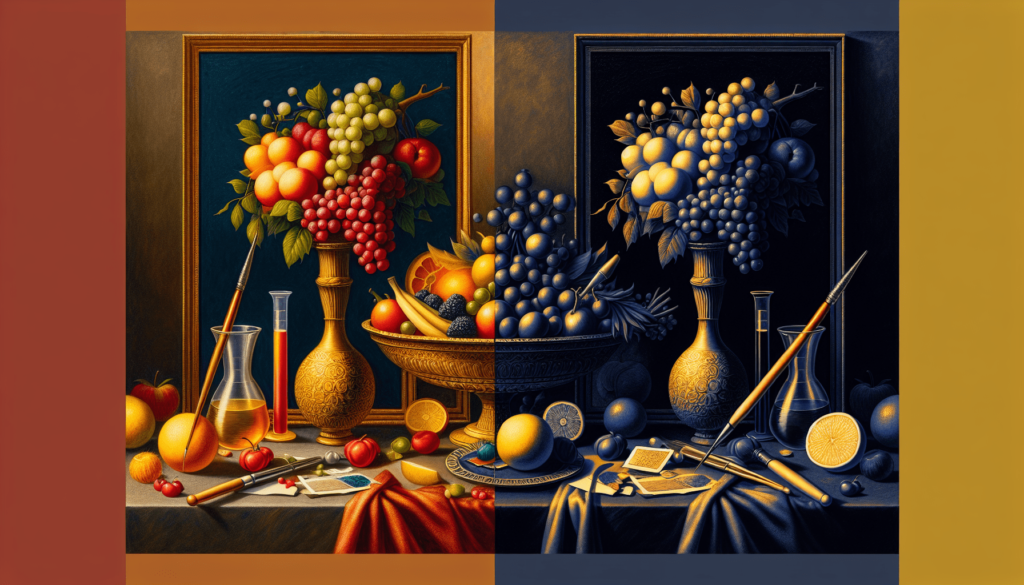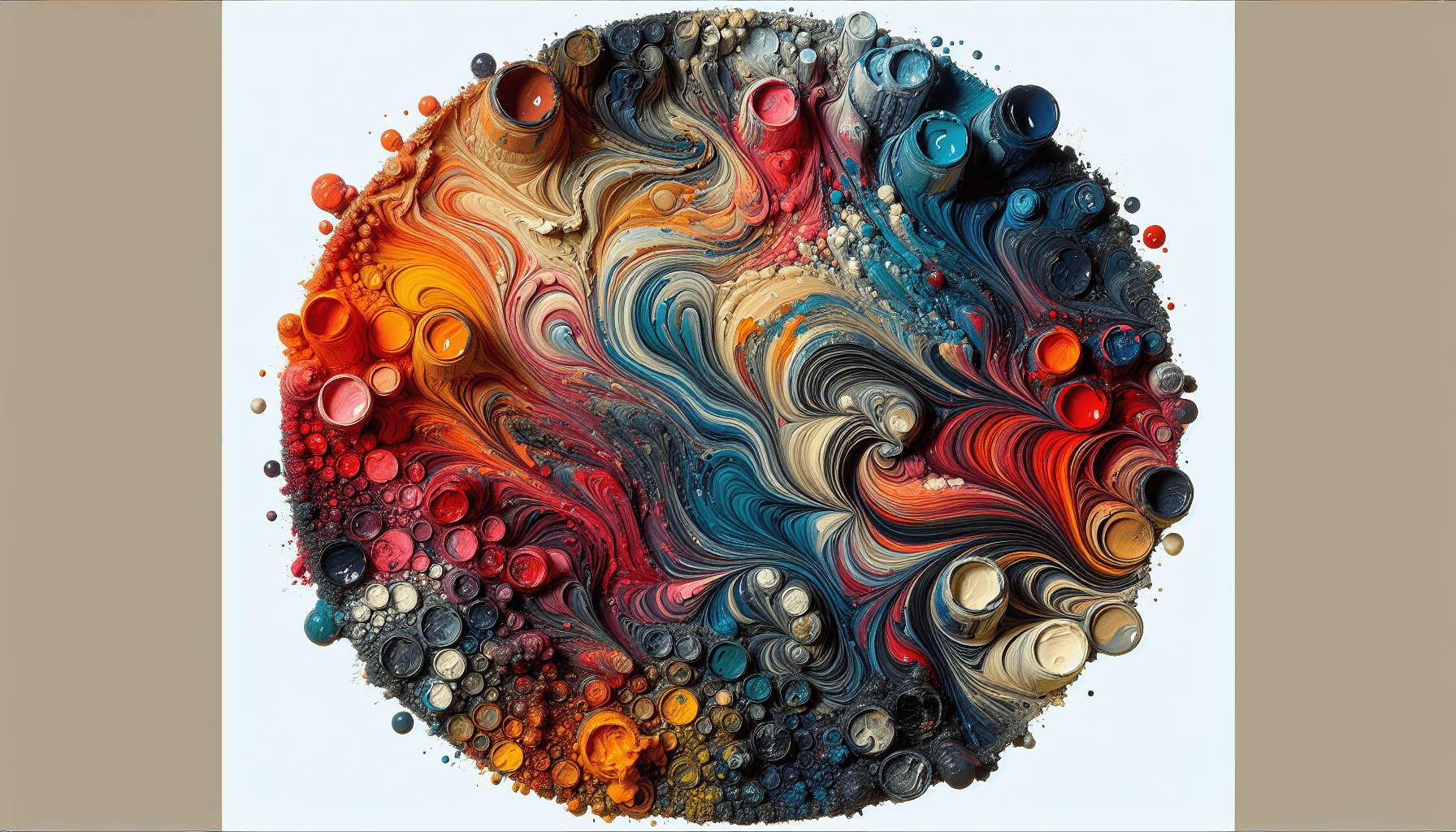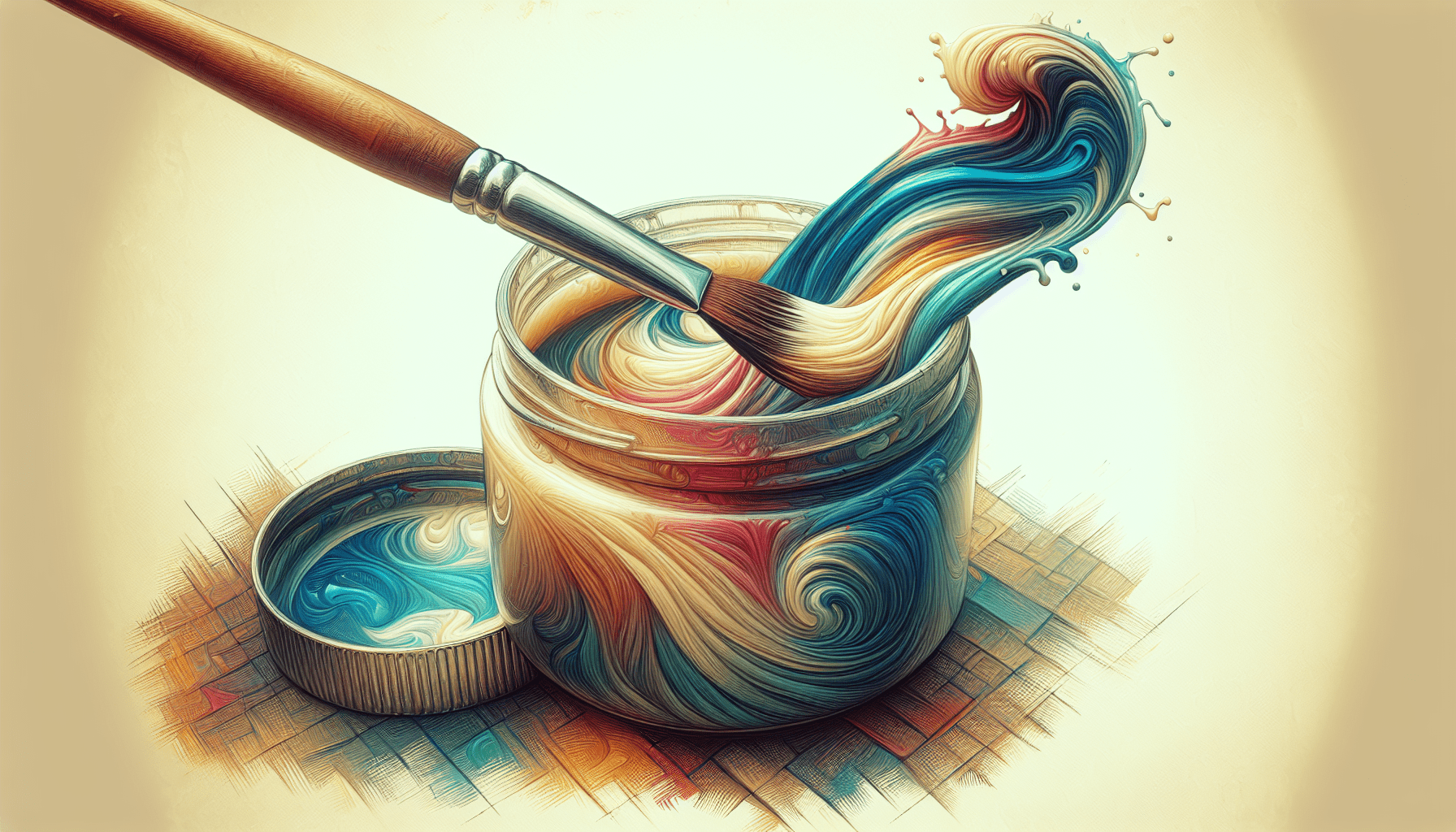Understanding the distinctions between oil paints and tempera paints is crucial for artists seeking to achieve certain effects in their artwork. Oil paints and tempera paints have different compositions, drying times, and application techniques that result in diverse visual outcomes. While oil paints are made with pigments suspended in oil, tempera paints utilize pigments mixed with water or egg yolk. Furthermore, oil paints have a significantly longer drying time, allowing for more flexibility in blending and layering colors, while tempera paints dry quickly, resulting in a flatter and more opaque finish. By comprehending these fundamental differences, artists can make informed decisions on which medium best suits their artistic vision.
Composition
Oil paints
Oil paints are composed of pigments suspended in a binder that is primarily an oil medium. The most commonly used oil in oil paints is linseed oil, though other oils such as poppy seed oil or walnut oil can also be used as binders. The pigments used in oil paints can be both natural and synthetic, providing a wide range of color options.
Tempera paints
Tempera paints, on the other hand, are composed of pigments mixed with a water-soluble binder. Traditionally, egg yolk was used as the binder, giving rise to the term “egg tempera.” Modern tempera paints often use synthetic binders such as gum arabic or casein. These binders help the pigments adhere to the painting surface.
Drying Time
Oil paints
Oil paints have a relatively slow drying time, which can be both an advantage and a disadvantage. The drying time can vary depending on factors such as the thickness of the paint layer and the ambient temperature and humidity. In general, oil paints can take anywhere from a few days to several weeks to fully dry. This slow drying time allows artists to work on their paintings over an extended period, blending and adjusting colors as needed.
Tempera paints
Tempera paints have a much faster drying time compared to oil paints. Once applied to the painting surface, tempera paints dry within minutes to hours, depending on the thickness of the paint layer and the environmental conditions. This quick drying time can be advantageous for artists who prefer to work in layers and build up their compositions rapidly.

Medium
Oil paints
Oil paints require a specific medium, such as linseed oil or walnut oil, to thin them and enhance their flow. The choice of medium can affect the drying time, texture, and appearance of the paint. Artists can experiment with different mediums to achieve the desired effects in their oil paintings.
Tempera paints
Tempera paints typically do not require additional mediums for thinning, as they are already water-soluble. However, artists can choose to use water or specific additives to adjust the consistency and workability of the paint. Adding water can make the tempera paint more transparent and easier to blend.
Opacity and Transparency
Oil paints
Oil paints are known for their rich, opaque colors. They can be applied in thick, buttery layers that provide excellent coverage and depth. However, oil paints can also be thinned with mediums to create more transparent glazes, allowing artists to achieve subtle layers of color and luminosity.
Tempera paints
Tempera paints tend to have a natural transparency, even when used in thicker layers. The pigment particles in tempera paints are smaller and more finely ground compared to oil paints, resulting in a smoother, more translucent appearance. Artists can build up layers of tempera paint to create the desired opacity and achieve a range of effects.

Layering
Oil paints
Oil paints are highly versatile when it comes to layering. Artists can apply multiple layers of paint on top of each other, allowing for the creation of textured surfaces and intricate details. Each layer can be fully dried before adding the next, or wet-on-wet techniques can be employed for blending colors together directly on the canvas.
Tempera paints
Layering with tempera paints requires a slightly different approach compared to oil paints. Since tempera paints dry quickly, artists need to work efficiently to create smooth transitions and gradations. Building up layers can be achieved by adding subsequent layers of paint while the previous layer is still slightly damp. This technique allows for a more controlled approach to layering with tempera paints.
Blending
Oil paints
Oil paints are renowned for their ability to blend smoothly and effortlessly. The slow drying time of oil paints allows artists to work with wet paint for extended periods, giving them ample time to blend and manipulate colors on the canvas. This blending capability is particularly advantageous for creating realistic and subtle variations in color and tone.
Tempera paints
Blending with tempera paints requires a more rapid and deliberate approach. Due to their quick drying time, artists must blend the colors while the paint is still wet or slightly damp. This can be done by using techniques such as feathering, cross hatching, or scumbling. While achieving seamless blending with tempera paints may require more skill and practice, it can still yield beautiful and controlled results.
Color Range
Oil paints
Oil paints offer an extensive range of colors, both in terms of the variety of pigments available and the ability to mix colors together. Artists can choose from a wide selection of pre-made oil paint tubes, each containing a specific pigment. Moreover, oil paints can be easily mixed on a palette, allowing artists to create endless color combinations and achieve the exact hues they desire.
Tempera paints
The color range of tempera paints is also extensive, with a wide array of pre-made colors available for artists to choose from. Additionally, tempera paints can be mixed together on a palette to create new shades and tones. However, it’s worth noting that the pigments used in tempera paints can have slightly different characteristics compared to those used in oil paints, which may affect the final color appearance.
Permanence
Oil paints
Oil paints are known for their excellent permanence and longevity. When properly cared for and stored correctly, oil paintings can retain their vibrancy and integrity for centuries. The durability of oil paints can be attributed to the strong bond formed between the pigments and the oil medium.
Tempera paints
Tempera paints also offer good to excellent permanence, with many paintings executed in tempera surviving for centuries. However, the longevity of tempera paintings can be influenced by factors such as the quality of pigments used, exposure to light and humidity, and the overall preservation and conservation of the artwork.
Application
Oil paints
Oil paints can be applied using various techniques and tools, including brushes, palette knives, and even fingers. The viscosity of oil paints can be adjusted by using different mediums or thinners, providing artists with control over the paint’s consistency. Oil paints can be applied in thin glazes or thick impasto layers, allowing artists to experiment with texture and dimension.
Tempera paints
Tempera paints are typically applied using brushes, although other tools such as sponges or fingers can be used as well. The water-based nature of tempera paints allows for smooth and even application, producing crisp and precise lines. Artists can work with different brush sizes and techniques to achieve the desired effects and details in their paintings.
Cleaning and Storage
Oil paints
Cleaning oil paint brushes and palettes requires the use of solvents such as turpentine or mineral spirits. These solvents help to dissolve and remove oil paint residue from brushes and surfaces. Proper ventilation and caution should be exercised when handling these solvents due to their volatile nature. As for storage, oil paintings should be kept in a cool and dry environment to prevent the accumulation of mold or deterioration of the paint.
Tempera paints
Cleaning tempera paint brushes and palettes can be done with water, making the process relatively simple and less toxic compared to oil paints. Brushes should be thoroughly cleaned and dried after each use to prevent the buildup of dried paint. When storing tempera paintings, it is essential to protect them from excessive moisture, as water can re-activate the paint and cause unwanted damage.
In conclusion, oil paints and tempera paints have distinct characteristics that set them apart. Understanding the differences in their composition, drying time, medium, opacity, layering, blending, color range, permanence, application, and cleaning and storage methods can help artists choose the most suitable paint for their artistic goals. Whether one prefers the versatility and slow drying time of oil paints or the quick-drying and transparent nature of tempera paints, both mediums offer unique possibilities for creative expression.



